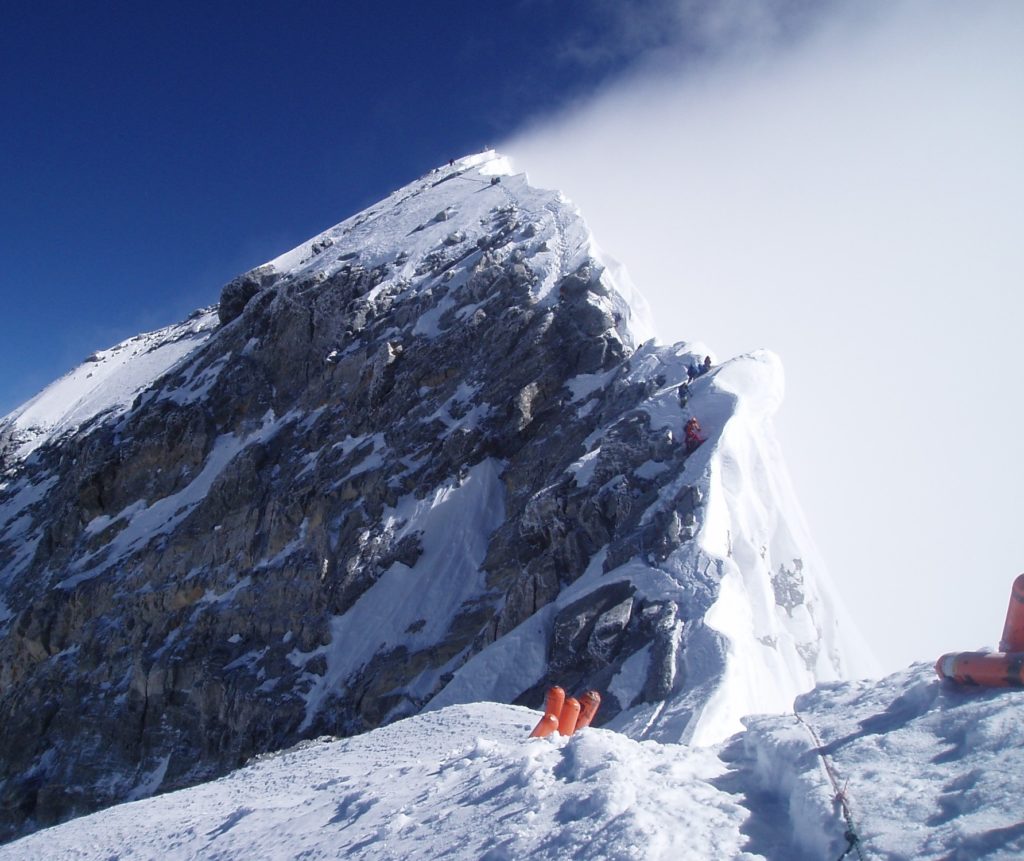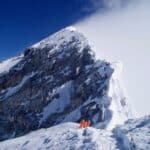Lots of commentary as usual during another busy climbing season on Mt Everest. Plenty of friends and colleagues sent me the above photo* of the logjam near the summit last week – along with their opinion on this somewhat bizarre situation.
We were a very small, experienced and qualified team of climbers on our summit day back in 2005. Our Sherpa team were guns and without them, we would never have been successful. While we didn’t particularly enjoy it at the time, 35 knots winds made our summit day tough going. But it was actually a blessing in disguise, as these conditions caused almost everyone else to turn around.

Being prepared, committed and able to continue in these conditions gave us a clear run to the top and back down again. We had the summit to ourselves. We’d all done a power of work over many years to earn an opportunity and our #noshortcuts preparation held us in good stead. I also knew what can happen in the mountains when you get it wrong, having lost a good friend and climbing partner on an attempt of the world’s 6th highest mountain (Cho Oyu) two years earlier. This image (above right) shows the final summit ridge as we had it on May 31, 2005. No crowds this day.
I’m now fortunate to work with schools, business and sporting teams in the area of resilience development with my good mate David Buttifant. We’re extremely passionate about what we do.
What is resilience exactly?
We admire resilience when we see it. The team that refuses to admit defeat. The athlete that comes back from a serious injury. The business leader that never seems to lose their cool. And we observe it painfully when we see people struggling. We all know people that don’t cope when things get tough. Their wheels fall off and we wish we could help.
But what exactly is this special ingredient resilience? Its presence often isn’t obvious when on display. The dictionary definition, “the ability to recover quickly from setbacks”, doesn’t shed much light. Resilience has become quite the buzzword and it encompasses a wide range of intangible traits. Some of these include:
- Composure under pressure
- A quiet confidence that inspires
- A contagious optimism when things aren’t going to plan
- The ability to stay the course and not give up
Of all its forms and definitions, I think I like that last one the most. Resilience is the ability to stay the course and not give up.
How can we get it?
At Resilience Builders, we assert that you can’t build resilience in the classroom. You can’t build it in the office or at a conference. You can’t get it from a PowerPoint presentation. You can learn about it, hear about it and read about it in the classroom, but you cannot build and develop a dynamic capability like resilience in a static environment. As screens take over, resilience is more important than ever for our young people.
Resilience has to be earned: through practice, sacrifice and repetition. It requires getting out of your comfort zone and the willingness to fail. Learning from every failure, adjusting behaviour and racking up the experience. You don’t have to want to climb Mt Everest, or any mountain for that matter. But sometimes, you’re going to need to make a contract with yourself to persevere and push on when things get tough. Being capable of that using healthy and positive behaviours = resilience.
* Climbers queue on Mt Everest on Wednesday, May 22, 2019. Nirmal Purja, Project Possible






